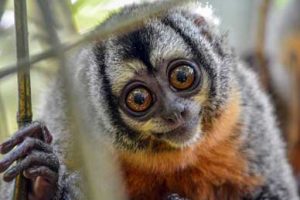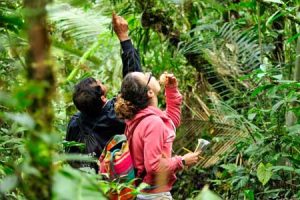Scientific Investigation in Perú
This work has led to the discovery of new populations of Critically Endangered yellow tailed woolly monkeys (Lagothrix flavicauda) and the raising of the international conservation status of the Peruvian night monkey (Aotus miconax) from Vulnerable to Endangered on the IUCN Redlist of threatened species. We also use the results of investigations to monitor the long term outcomes of our conservation work, for example, a second study of yellow tailed woolly monkey population densities revealed an increase of ~30% at our main research site after seven years of work, and in another study we showed the natural re-colonization and growth of a population of Critically Endangered San Martin titi monkeys in a reforested Private Conservation Area, proving the applicability of these activities for similar species and sites across Peru.



